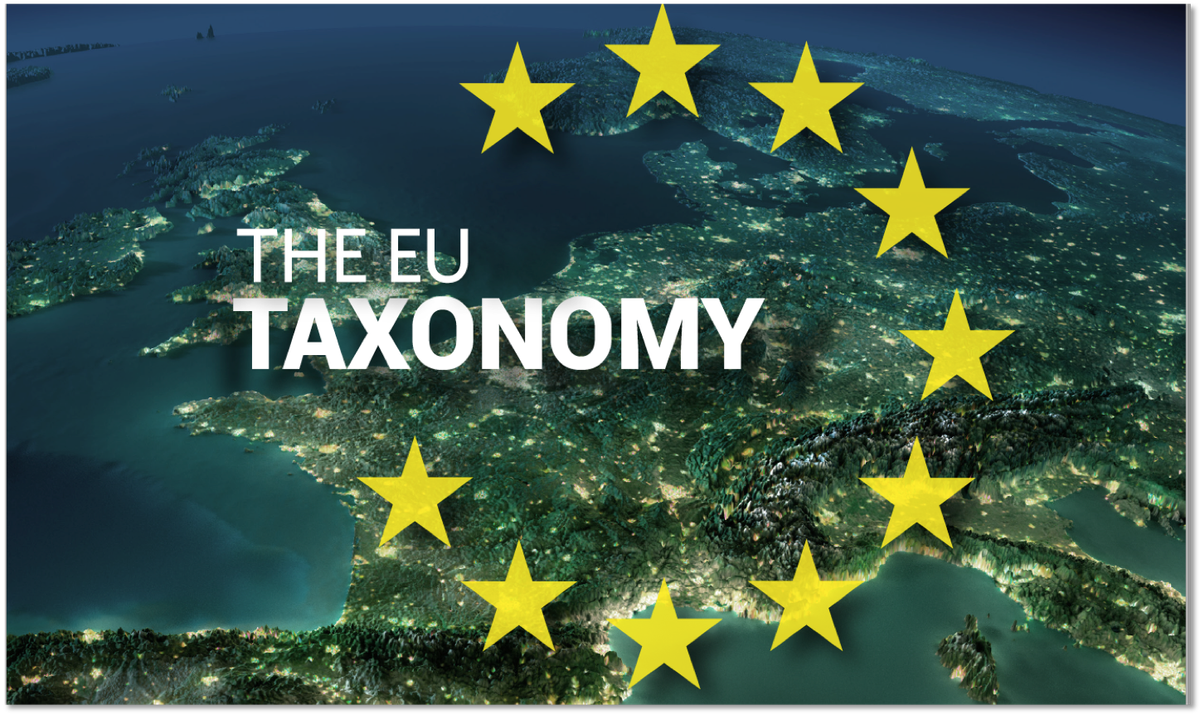An Introduction to the EU Taxonomy: Key Concepts Defined and Illustrated

As sustainability transforms finance and investment, there is growing demand for a framework that clearly distinguishes genuinely sustainable activities from greenwashing. The EU Taxonomy answers this need, providing a standardized system that defines which economic activities qualify as “sustainable” under specific, science-based criteria. Developed by the European Union, the Taxonomy guides ESG data users—from investors to policymakers—toward informed decisions that support verified environmental impacts.
In this article, we’ll break down the EU Taxonomy’s core components, including its six environmental objectives and the criteria for activity alignment, and explore a practical example to show why understanding this framework is essential in today’s sustainability-focused economy.
Background and Purpose
The EU Taxonomy is a comprehensive classification system created by the European Union to guide its transition toward a net-zero emissions economy by 2050. It provides a shared language and clear criteria that companies, investors, and policymakers can use to identify which activities align with the EU’s environmental goals. By setting clear, science-based standards, the EU Taxonomy aims to promote investment in sustainable activities, prevent greenwashing, and provide transparency for investors, companies, and policymakers, paving the way for a more sustainable and resilient economy.
Core Components of the EU Taxonomy
At the core of the EU Taxonomy are six environmental objectives, each setting specific sustainability criteria for economic activities. These objectives are the foundation for evaluating whether activities genuinely support the EU’s goals for a sustainable economy.
The Six Environmental Objectives

- Climate Change Mitigation: This objective targets the reduction of greenhouse gas emissions to combat global warming. Eligible activities include renewable energy generation, energy efficiency upgrades, and sustainable land-use practices, all aimed at reducing carbon footprints.
- Climate Change Adaptation: Adaptation aims to build resilience against the impacts of climate change, such as extreme weather events and changing climate conditions. Qualifying activities include infrastructure upgrades, disaster preparedness, and other measures that enhance resilience without negatively impacting other environmental goals.
- Sustainable Use and Protection of Water and Marine Resources: Ensuring sustainable water use and preserving marine ecosystems are critical to biodiversity and human health. Activities under this objective may involve sustainable water management, pollution control, and practices that conserve water resources.
- Transition to a Circular Economy: This objective promotes the efficient use of resources by minimizing waste and encouraging recycling. Eligible activities may include material recycling, eco-design, and waste reduction strategies that contribute to a more circular and resource-efficient economy.
- Pollution Prevention and Control: Activities aligned with this objective aim to prevent or reduce pollution, improving environmental and human health. Examples include air and water pollution control, hazardous waste management, and the adoption of less harmful chemicals in production processes.
- Protection and Restoration of Biodiversity and Ecosystems: This objective supports activities that enhance biodiversity and protect ecosystems. Qualifying activities include sustainable land management, conservation efforts, and ecosystem restoration to safeguard natural habitats and species.
Understanding Eligibility and Alignment
Within the EU Taxonomy framework, economic activities are assessed in two stages: eligibility and alignment.
1. Eligibility: Identifying Potential for Sustainability
Eligibility determines whether an activity has the potential to contribute to one or more of the six objectives. An eligible activity is listed in the taxonomy as potentially sustainable but must meet additional criteria to be fully recognized.
2. Alignment: Meeting Comprehensive Sustainability Standards
Alignment is the next level of assessment for determining a sustainable activity. For an eligible activity to achieve alignment—and therefore be classified as fully taxonomy-compliant—it must meet several additional criteria that verify its contribution to sustainability.

Firstly, an aligned activity must contribute substantially to at least one of the six environmental objectives defined by the EU Taxonomy. This substantial contribution is verified by specific technical screening criteria unique to each objective. For example, an activity contributing to climate change mitigation would need to demonstrate measurable reductions in greenhouse gas emissions.
In addition to substantial contribution, an activity must uphold the Do No Significant Harm (DNSH) principle. This means that while it may support one objective (like climate change adaptation), it must not adversely impact any of the other objectives, ensuring a balanced approach to environmental protection.
Finally, aligned activities are required to comply with minimum social safeguards. These safeguards are designed to uphold human rights, labour standards, and fair practices, ensuring that activities contributing to environmental sustainability are also socially responsible.
Only those activities that meet all these criteria—substantial contribution, DNSH, and social safeguards—are classified as aligned and fully taxonomy-compliant, signifying their verified and significant impact on sustainability.
Practical Example: Manufacturing of Bicycles
Mr. Henry runs a bicycle manufacturing company that generates revenue by selling bicycles—a product with a positive environmental impact due to its low emissions. To have this activity qualify under the EU Taxonomy, Mr. Henry’s revenue from bicycle sales must contribute to the Climate Change Mitigation objective, which promotes activities that help reduce carbon emissions.

However, the production process for bicycles requires large amounts of aluminum, which can cause pollution if not properly managed. To align with the EU Taxonomy’s sustainability criteria, Mr. Henry installed an efficient waste management system that recycles and reuses production waste. This system minimizes pollution and protects water resources, ensuring that his company does no significant harm to other environmental objectives like pollution prevention and water conservation.
To fully qualify, Mr. Henry must also comply with minimum social safeguards. Mr. Henry’s company upholds standards in line with the OECD Guidelines for Multinational Enterprises. This includes ensuring human rights are respected across operations, actively preventing any form of labour exploitation, and implementing anti-corruption measures.
With these environmental and social measures in place, Mr. Henry’s bicycle manufacturing meets the alignment criteria under the EU Taxonomy. His revenue from bicycle sales is now considered taxonomy-aligned, reflecting a verified and substantial contribution to sustainability.
Benefits of EU Taxonomy Alignment
Aligning with the EU Taxonomy offers companies several strategic benefits, enhancing their reputation, financial appeal, and resilience in a sustainability-focused market.

Access to Favorable Financing Options
Taxonomy alignment opens up access to green financing opportunities, as banks and financial institutions increasingly prioritize sustainable investments. In many cases, companies that meet these criteria may receive more favorable financing conditions, such as lower interest rates.
For example, Mr. Henry’s compliance with the EU Taxonomy makes his bicycle manufacturing company eligible for green loans at lower interest rates, reducing his cost of capital and supporting the company’s growth.
Enhanced Reputation and Competitive Edge
Meeting EU Taxonomy standards signals a strong commitment to sustainability, which can elevate a company’s reputation and differentiate it from competitors. This alignment makes the business more attractive to eco-conscious customers, partners, and stakeholders.
In Mr. Henry’s case, his alignment with the Taxonomy standards positions his company as a leader in sustainable manufacturing, attracting environmentally minded consumers and like-minded business partners who value responsible practices.
Increased Appeal to ESG Investors
With the rising focus on sustainable investing, taxonomy-compliant companies become more attractive to ESG-focused investors. Compliance with the EU Taxonomy criteria gives these investors confidence that they’re backing activities with genuine environmental impact, meeting their own sustainability goals.
For Mr. Henry, this alignment enhances his appeal to ESG-driven investors who prioritize sustainability, giving them assurance that their investments are supporting a verified, positive impact.
Strengthened Long-Term Resilience
Aligning with the EU Taxonomy can help businesses proactively address environmental, regulatory, and operational risks, building resilience against future market shifts. Sustainable practices, such as efficient resource use, can also lead to operational cost savings.
For instance, Mr. Henry’s commitment to waste management not only reduces pollution but also cuts operational costs, helping his company stay resilient in an evolving regulatory landscape focused on sustainability.
Driving Sustainable Impact with the EU Taxonomy
As the drive toward sustainability reshapes industries, the EU Taxonomy stands as a vital framework for identifying, supporting, and investing in truly sustainable activities. For business leaders, investors, and policymakers alike, aligning with the Taxonomy not only fosters positive environmental and social impact but also opens doors to significant advantages—strengthened reputation, favorable financing, and resilient operations in a rapidly evolving market.
Explore our EU Taxonomy Data
At Tracenable, we have been collecting EU Taxonomy data on over 2,000 companies. Willing to learn more? Review our EU Taxonomy Product Factsheet to discover practical use cases and see how this data can support your business in meeting regulatory standards, securing sustainable financing, and gaining a competitive edge.





